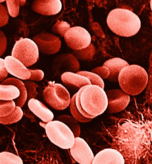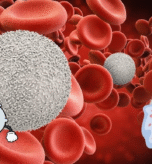Dry skin, also known as xerosis, is a common skin condition characterized by a lack of moisture, leading to rough, tight, and flaky skin. It can be uncomfortable, unsightly, and even painful. However, with the right skincare routine, lifestyle changes, and treatments, dry skin can be managed and revitalized.
Understanding Dry Skin
Before we dive into the world of skincare for dry skin, it’s essential to understand the causes and characteristics of this skin type:
1. Lack of moisture: Dry skin lacks the natural moisture barrier, leading to water loss and dryness.
2. Environmental factors: Harsh weather conditions, dry air, and extreme temperatures can strip the skin of its natural oils.
3. Genetic predisposition: Some people may be more prone to dry skin due to their genetic makeup.
4. Skin conditions: Certain skin conditions, such as eczema, psoriasis, and dermatitis, can cause dry skin.
Skincare Routine for Dry Skin
A gentle, nourishing skincare routine is crucial for managing dry skin. Here’s a simple, effective routine to follow:
1. Cleansing: Use a gentle, fragrance-free cleanser that effectively removes dirt and impurities without stripping the skin of its natural oils.
2. Toning: Apply a toner that helps balance the skin’s pH, reduces inflammation, and prepares the skin for further products.
3. Exfoliating: Exfoliate 1-2 times a week using a gentle, chemical-based exfoliant or a physical exfoliant with small, round beads.
4. Moisturizing: Apply a rich, hydrating moisturizer that provides long-lasting moisture and protection.
5. Sealing: Seal everything in with a facial oil or cream that locks in moisture and protects the skin from environmental stressors.
Key Ingredients for Dry Skin
When choosing skincare products for dry skin, look for the following key ingredients:
1. Hyaluronic acid: A natural humectant that attracts and retains moisture, leaving the skin feeling soft, supple, and hydrated.
2. Ceramides: Natural lipids that help repair and restore the skin’s natural barrier function.
3. Niacinamide: A form of vitamin B3 that improves skin elasticity, reduces inflammation, and enhances skin brightness.
4. Glycerin: A humectant that helps retain moisture and soothe dry, irritated skin.
Lifestyle Tips for Dry Skin
In addition to a consistent skincare routine, a few lifestyle changes can help manage dry skin:
1. Stay hydrated: Drink plenty of water throughout the day to keep your skin hydrated from the inside out.
2. Use gentle products: Avoid harsh soaps, cleansers, and exfoliants that can strip the skin of its natural oils.
3. Avoid hot showers: Take warm showers or baths instead of hot ones, which can strip the skin of its natural oils.
4. Use a humidifier: Dry air can exacerbate dry skin, so using a humidifier can help maintain a healthy moisture level.
Treatment Options for Dry Skin
If your dry skin persists or worsens despite your best efforts, consider the following treatment options:
1. Topical corticosteroids: Over-the-counter or prescription creams or ointments that reduce inflammation and itching.
2. Moisturizing creams: Rich, hydrating creams that provide long-lasting moisture and protection.
3. Facial oils: Nourishing oils that help lock in moisture and protect the skin from environmental stressors.
Conclusion
Dry skin can be uncomfortable, unsightly, and even painful. However, with the right skincare routine, lifestyle changes, and treatments, dry skin can be managed and revitalized. Remember to stay hydrated, use gentle products, and avoid hot showers to help maintain healthy, hydrated skin. If your dry skin persists or worsens, consider consulting a dermatologist for personalized advice and treatment.



